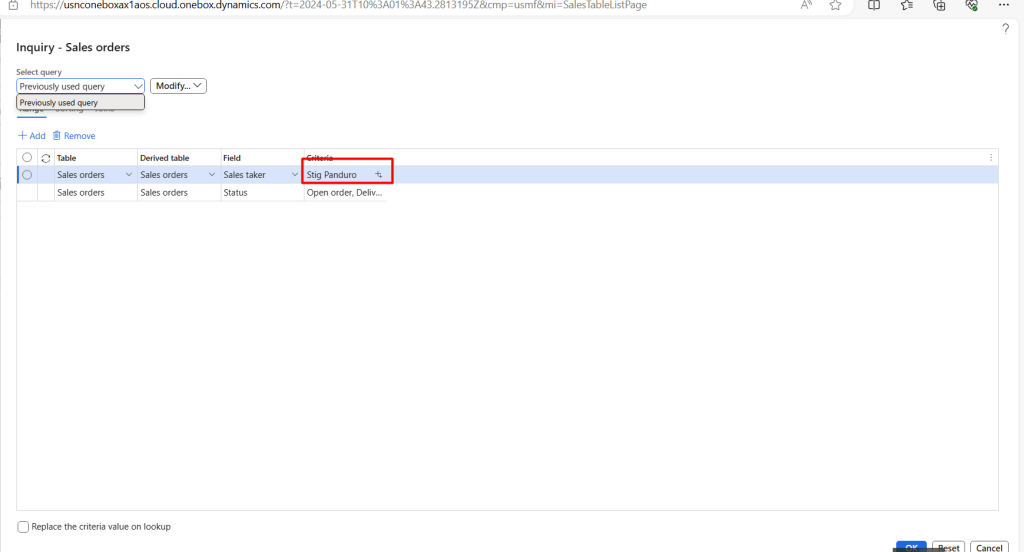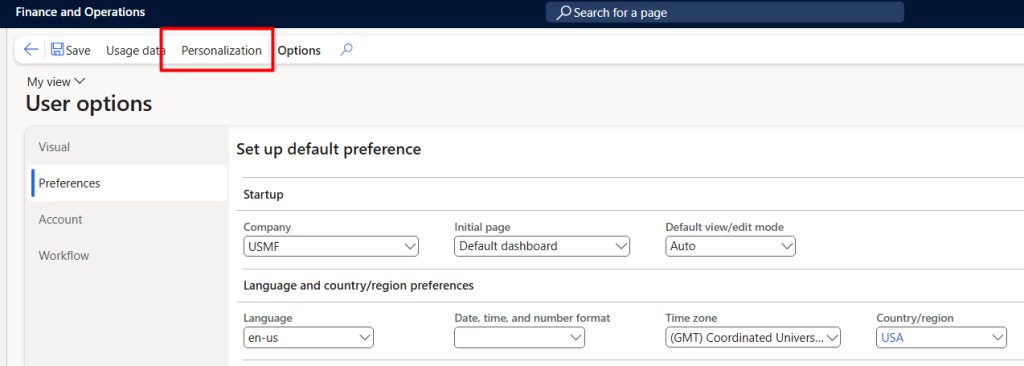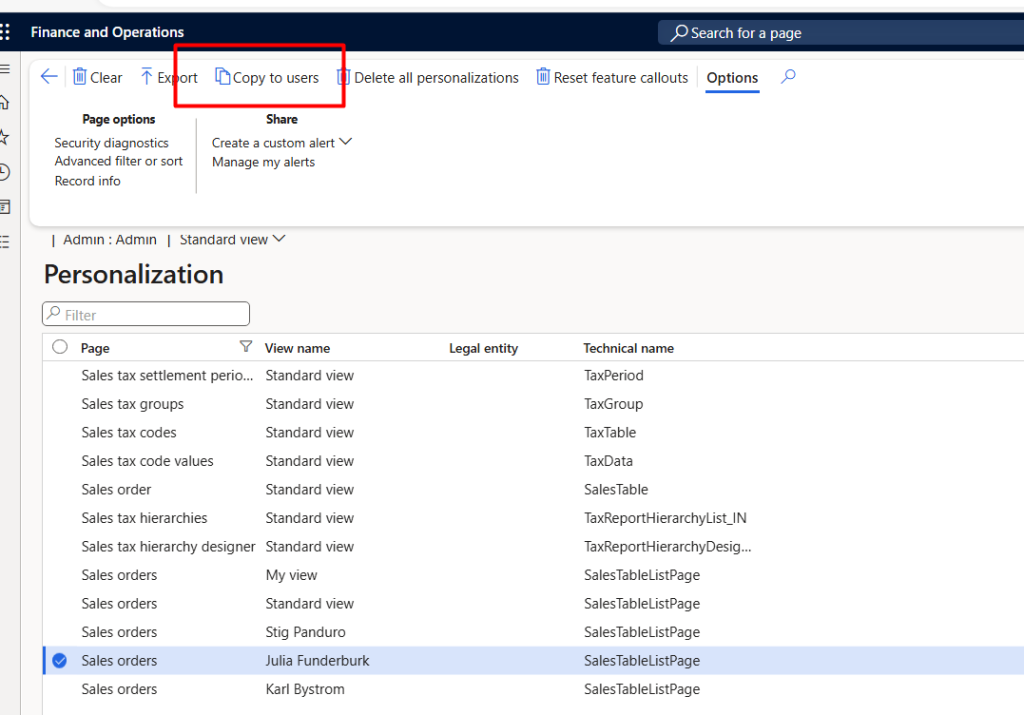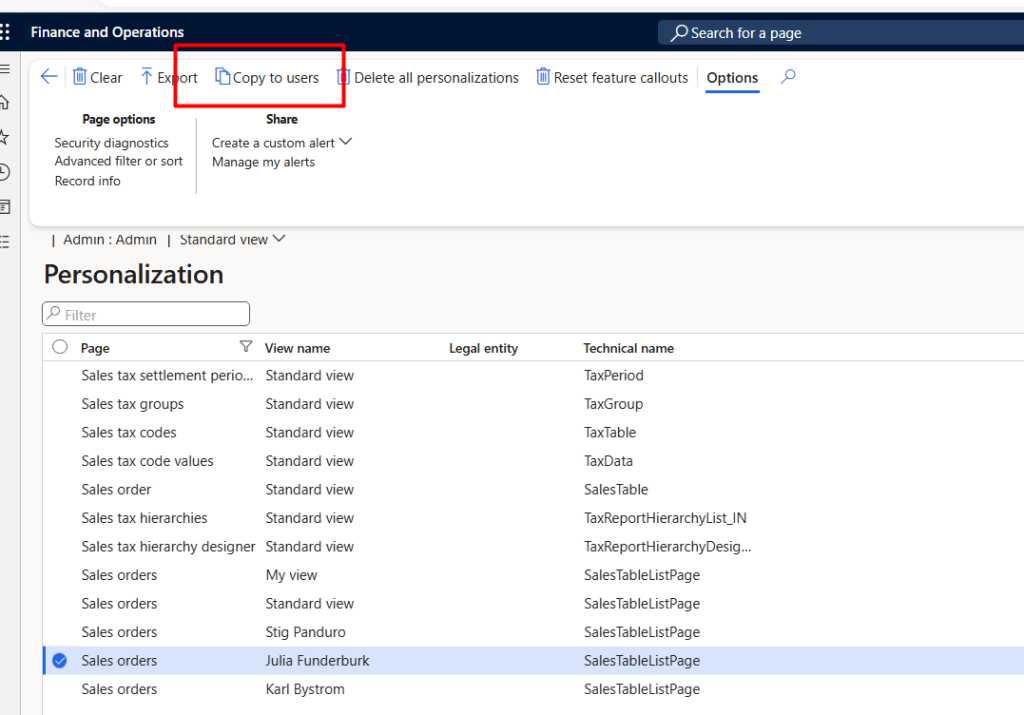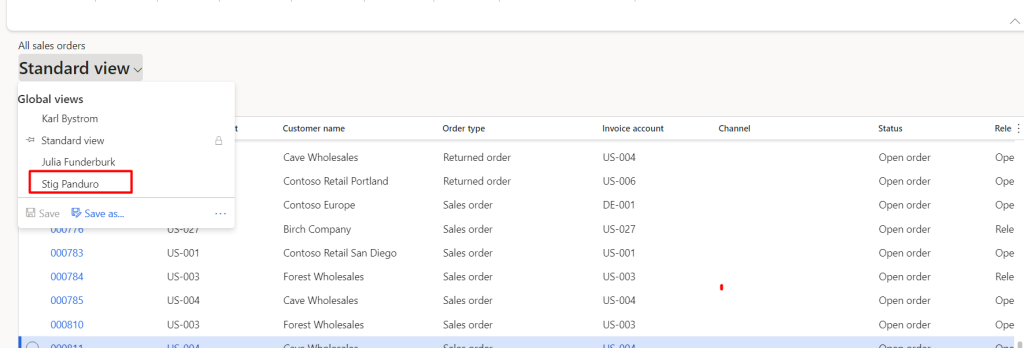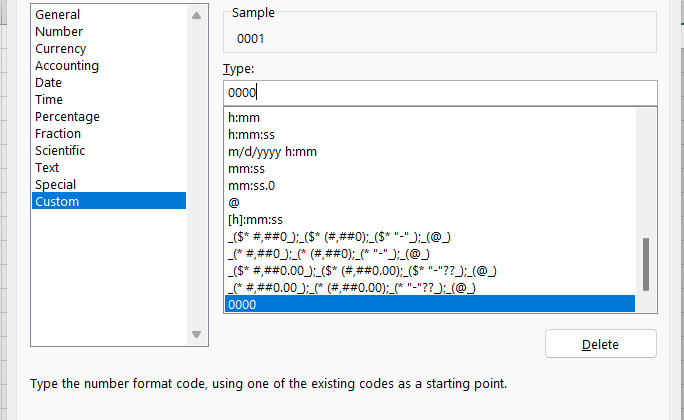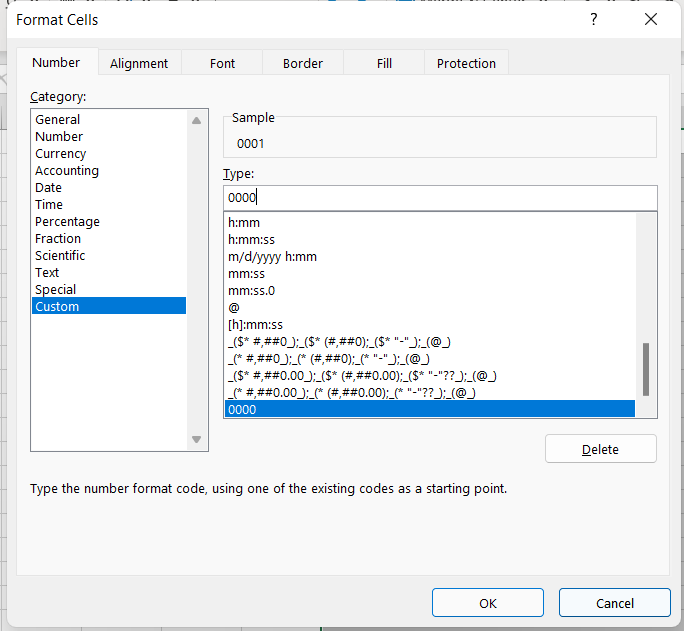Hello every one, today in this blog post we will explore Advance filter in D365 page.
We normally used filters on grid by using key words like “Begin with”, “Contains”, “Is one of”, ”is exactly” etc.

D365 Also provide the advanced filter and sorting options, from where end user can create complex queries.
These queries can be used data from another related tables.
You can find the option in almost every form under option tab in the ribbon.

- Table – This provide the option to select the table that can be used inside the selection.
- Derived table – this will update when you select the table.
- Field – This is the field on which we can apply filter
- Criteria – Here we select the criteria to filter the records.

If you click on sorting, here we can add and used files on records will display in grid.

If we click on Joins. select on
Construct a query

On show details toggle button click and show yes. It will show more detail on grid.

Select the customer where custTable: OrderCustomer

After selection, you will also find Customer

In rage screen, click on Add button and new row will appear. Select Customers and then from field select “Account Status” and in Criteria select Hold.

on apply sales order list shows all records with Invoice accounts.

For verification if we go on customer and in Credit and collections fast tab, the status of account status as Hold.




